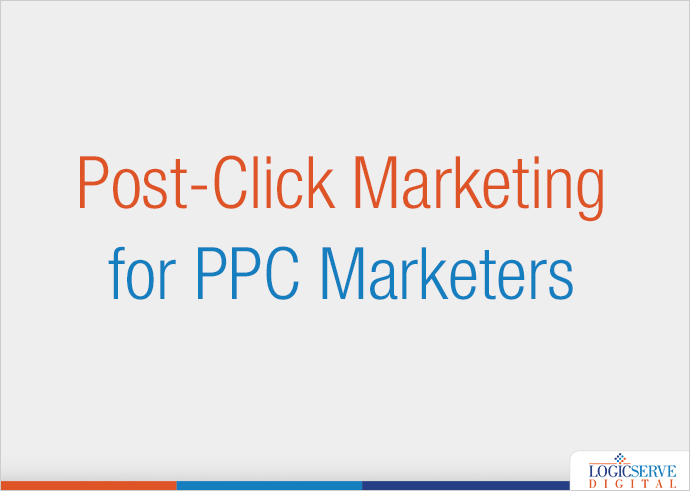Post-Click Marketing is essentially a marketing effort that one would undertake after a person clicks on the online advertisement. It is focused on the first few pages that the respondent visits or experiences immediately after clicking on the ad. The magnitude of post-click marketing can vary greatly, it can be as simple as having a good landing page that would help the respondents complete their transaction, or it may lead to an advanced dedicated microsite. 
Modern day, post-click marketing has other innovative features such as ‘conversation path’ that guides the respondents through the different stages of the transaction and offers with the best content to keep their interest retained until the end.
Post-click marketing has given a new dimension to the marketers’ efforts to give the customers a seamless and hassle free experience to complete the transaction post winning their ad click. It focuses on three great principles:
• Having an original layout for the landing page as well as have a better flow of the content as compared to the plain old conventional landing pages.
• Focus on better message match between the online advertisements and the pages that they redirect the respondents to
• Categorising the respondents based on their behavioural choices
Let’s take a closer look at the three principles
Creative landing pages
Given the fact that the online advertisements are restrained to about 13-140 characters of just plain text, it would be fair to say that the landing page is the marketer’s best chance to create the best impression on the respondent. It is quintessential for the brands to make the page attractive and attention grabbing for the respondent with useful, short and crisp content, brilliant page design and attractive visuals that not just support the text content but also communicates the brand’s passion, energy and commitment to serve the customer to their best ability.
While creating the best landing page, the marketers need to do away with the age-old notion that the landing page must be of just one page. You can create multiple landing pages to deliver different experiences to the customers. No matter, if you have two, three, four or more landing pages, the key is to maintain the interest of the respondent, and a conversational tone works the best in this regard.
Better Message Match
When a person searches for a particular keyword, and they see your advertisement and the ad creative that is specific to the keyword, it is only natural that they would expect the landing page to have relevant content and fulfil the exact thing they are seeking. And if your landing pages are just the extension of your ad, you can be pretty certain to have the respondent’s attention locked for a longer duration and have better engagement with them. What it also does, is that it helps you build a trust among the customer, which in turn plays a huge role in winning their loyalty. However, on the flip-side, if the landing page does not provide what the ad promises or if the content on the landing pages mismatches the ad copy, it would surely put off the customer, and their chances of returning to your page would be zero.
One of the key things to remember while creating a landing page is to create different landing pages so as to cater to a different audience for the different message that you are trying to communicate to them. Always follow the rule of thumb, there should be at least one landing page for one ad group.
Audience Segmentation
People who come to your landing through the ad click have different needs, priorities, and characteristics. It is, therefore best advised, you, as a marketer to frame your offer in a way that it caters to different respondent groups correctly. The more specific you are with your offer, the higher will be your conversion rate. To be able to create a particular message, you would have first to determine which category or group a certain respondent will belong to. You can assess the category by looking at the keywords they use and their search pattern. For instance, if a person frequently searches for things related to health care, it would only make sense to segment the person as a health care professional.




